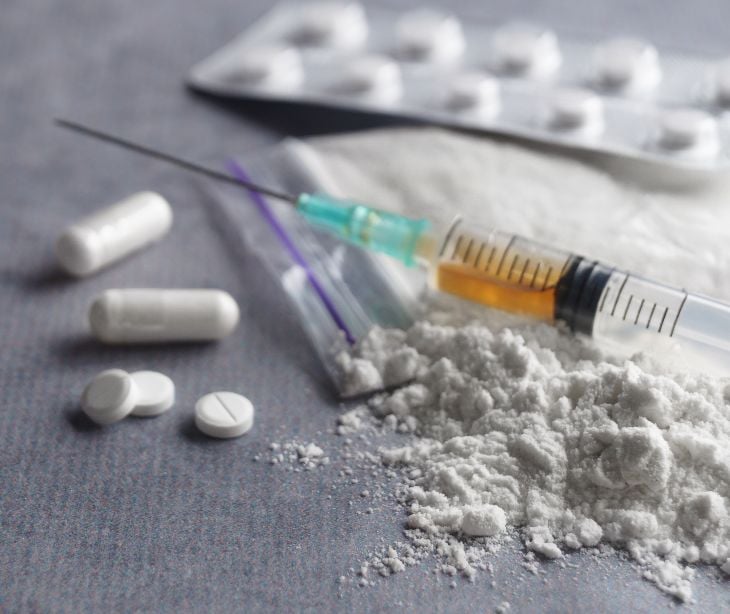
Healthcare providers and individuals seeking treatment must understand guidelines for patient consent and the sharing of protected health information (PHI) related to Substance Use Disorder (SUD).
As the healthcare landscape grows, continuous updates to the law demonstrate a commitment to safeguarding patient privacy while meeting the challenges posed by advancing technology and changing healthcare needs. By adhering to these regulations, healthcare providers can create a safe and secure environment for patients seeking treatment.
Understanding HIPAA and substance use disorder
Substance Use Disorder (SUD) is a major public health concern, and ensuring patient privacy and data confidentiality is of the highest priority in the healthcare industry.
HHS Secretary Xaviar Becerra stated, “Patient confidentiality is one of the bedrock principles in health care. People who are struggling with substance use disorders must have the same ability to keep their information private as anyone else. This new rule helps to ensure that happens by strengthening confidentiality protections and improving behavioral health integration with other medical records.”
To address this, the US Department of Health and Human Services (HHS) and The Substance Abuse and Mental Health Services Administration (SAMHSA) collaborated to create the HIPAA Drug and Alcohol Records Law, also known as 42 CFR Part 2. This legislation outlines guidelines for handling patient consent and the sharing of SUD-related PHI.
Read also: HIPAA and substance abuse patients PHI
What is the HIPAA drug and alcohol records law (42 CFR Part 2)?
The HIPAA Drug and Alcohol Records Law, also known as 42 CFR Part 2, serves as a guide for determining when patient consent is needed to share SUD-related protected health information (PHI). It defines specific scenarios in which sharing such information is permissible without explicit patient consent.
These circumstances include Part 2 Programs, where PHI can be shared within the program to facilitate coordinated care. Additionally, medical emergencies warrant the disclosure of PHI to any required healthcare provider to ensure prompt and appropriate treatment. The law also emphasizes sharing SUD-related PHI with authorities and medical providers in situations of child abuse and neglect, prioritizing the child's safety within the confines of the law.
Read more: HIPAA and substance abuse patients PHI
Understanding part 2 programs
Part 2 programs refer to programs that are federally assisted, such as specialized substance use disorder treatment facilities, units within general medical care facilities, medical personnel staff in a general medical care facility whose primary function is for SUD diagnosis, treatment, or referral, and practitioners such as physicians, psychologists, and counselors that provide SUD diagnosis, treatment, or referral.
Read also: Patient consent: What you need to know
The rule on re-disclosure
Re-disclosure refers to the act of sharing previously disclosed information with another party. Under 42 CFR Part 2, if a patient gives consent for their treatment program to disclose their information to a third party, that third party is generally not allowed to re-disclose that information with another entity without the patient's additional explicit consent.
This rule restricting re-disclosure applies even in situations where the initial disclosure was allowed under one of the limited exceptions to the patient consent requirement. For example, SUD-related information obtained in an emergency cannot necessarily be shared by the emergency care provider. There are some cases where re-disclosure is allowed, such as for certain types of research, audits, and evaluations.
When can substance abuse disorder medical record information be disclosed under 42 CFR Part 2?
As noted above, SUD medical record information may be disclosed if the patient consents to the disclosure. Substance abuse disorder treatment programs most often make disclosures after a patient has signed a consent form that meets the requirements of 42 CFR Part 2. In light of HIPAA, a Part 2 consent form must include the following elements:
- Name or general designation of the program or person permitted to make the disclosure;
- Name or title of the individual or name of the organization to which disclosure is to be made;
- Name of the patient;
- Purpose of the disclosure;
- How much and what kind of information is to be disclosed;
- Signature of the patient (and, in some states, a parent or guardian);
- The date on which signed consent is given;
- A statement that the consent is subject to revocation at any time except to the extent that the program has already acted on it; and
- The date, the event, or condition upon which consent will expire if consent has not been previously revoked.
Updates and expected changes
In 2020, the HIPAA privacy rule (45 CFR § 164.508) was updated to accommodate technological advancements and privacy demands. These amendments reinforced data encryption, restricted access, and imposed stricter penalties for unauthorized disclosure, conforming to both HIPAA and legal code requirements.
Looking ahead, further enhancements to the HIPAA privacy rule are anticipated to ensure unparalleled confidentiality for SUD patient records. The ongoing commitment to updating regulations proves the dedication to safeguarding patient privacy, encompassing both HIPAA and legal code requirements.
See also: HIPAA Compliant Email: The Definitive Guide
In the news
Recently, HHS and the Substance Abuse and Mental Health Services Administration (SAMHSA) finalized modifications for confidentiality regulations regarding patients with substance use conditions (SUDs). The new provisions specifically increase coordination among providers, strengthen confidentiality through civil enforcement, and try to integrate behavioral health information with other medical records for better patient outcomes.
The ruling is a positive step for patients and could show how the public is increasingly aware of their data being transferred without consent. The ruling should help make sure those seeking treatment for substance use are provided a layer of protection.
Related:
- HHS finalizes new provisions in confidentiality for substance use
- HHS modifies rule for confidentiality of substance use disorder records
FAQs
Does HIPAA apply to the confidentiality of substance use disorder (SUD)?
Yes, HIPAA (Health Insurance Portability and Accountability Act) applies to the confidentiality of substance use disorder (SUD) information. It sets standards for the protection of sensitive patient health information, including SUD-related data.
Do I need consent to disclose or access substance use disorder (SUD) information?
Yes, in most cases, you need patient consent to disclose or access substance use disorder (SUD) information. However, there are specific circumstances where the law allows disclosure without consent, such as in cases of medical emergencies or when required by law.
What methods or tools can I use to ensure the confidentiality of substance use disorder (SUD) information?
You can use a combination of strict access controls, encryption, and secure data storage systems to ensure the confidentiality of substance use disorder (SUD) information. Additionally, following HIPAA guidelines and best practices for handling sensitive health information is necessary to maintain confidentiality.
Subscribe to Paubox Weekly
Every Friday we'll bring you the most important news from Paubox. Our aim is to make you smarter, faster.



